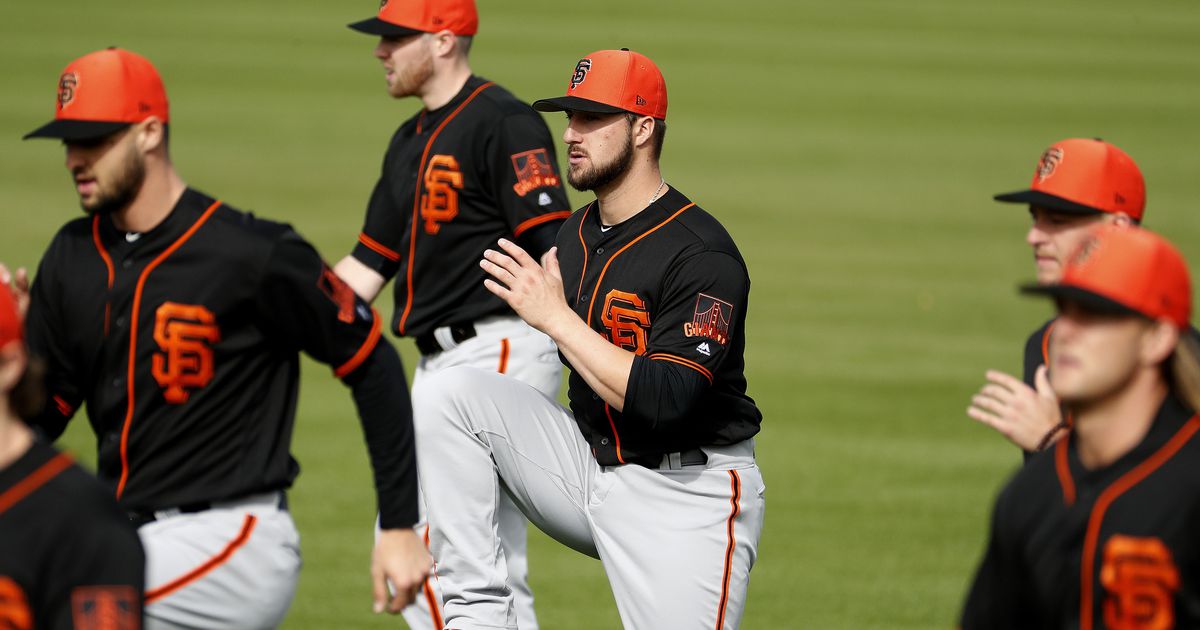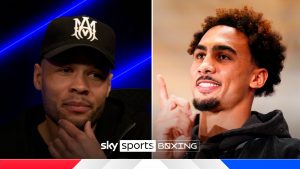MLB ’19: College draft picks on rapid rise to big leagues


SCOTTSDALE, Ariz. (AP) — Joey Bart already looks like a big league hitter in his first major league camp, especially when the San Francisco Giants catcher sends a misguided pitch soaring over the centerfield fence.
The same with White Sox shortstop Nick Madrigal every time he makes a spinning stab deep in the hole, or Tigers pitcher Casey Mize when he leaves an unsuspecting batter befuddled, or the four young arms the Royals selected among the first 40 picks of last year’s amateur draft.
All have a couple things in common: They played college baseball rather than turning pro out of high school, and they are all expected to help their clubs sooner than later.
Whether it’s the beginning of a trend toward selecting less risky, more advanced college prospects over raw, high-ceiling high school stars remains to be seen. But there are undeniable benefits to stocking a farm system with college players as opposed to an 18-year-old fresh off the prom, including the chance to provide more immediate help — not unlike what is expected of NBA and NFL picks.
“Yeah, that’s all high school players versus college players. The risk is lower,” explained J.J. Piccolo, the Royals’ assistant general manager in charge of scouting and player development.
“Some would make the case the reward is greater with a toolsy high school player,” Picollo said, “but that’s a case-by-case basis. You have a track record, three years playing against college competition. They’re playing against more advanced players, and the predictiveness of what they may do falls in line a little better. You know what to expect.”
None of which is necessarily new. Baseball scouts have been mining the college and prep ranks with equal fervor for years, and the maturity gap — physically and mentally — has always existed.
Some things have changed, though.
Some baseball officials believe kids chosen right out of high school are more inclined to pass up a modest signing bonus in favor of a few years in college these days, gaining not only an education and experience but also the opportunity to be drafted higher down the road.
Others believe patience has grown short in this modern, fast-paced world. Investing five years developing a first-round pick out of high school is no longer as palatable for ownership and fans alike. They’d rather see their first-round picks slipping on a big league jersey and playing in front of thousands of fans than toiling away in some baseball backwater.
“Everybody develops at their own pace. It’s hard to put a date on when that’s going to be,” Royals manager Ned Yost said. “We didn’t know when (Alcides) Escobar or Salvador Perez were going to develop and become All-Stars. We just knew they would. I wanted to take Salvy out of A-ball, because I knew he was going to be a great player. I wanted to get him going in the big leagues.”
Perhaps as a result, the first five picks of last year’s first-year player draft came from out of the college ranks. There were only 10 college kids picked in the first round in 2016, but there were 15 the following year and 13 first-round selections last summer.
One of them is Madrigal, the pint-sized second baseman picked fourth overall by the White Sox out of Oregon State. He rocketed through three minor league levels last summer and wowed scouts in big league camp before getting assigned to the minor league camp this week.
Even though that’s where he will begin the season, Madrigal may not be there long.
“They drafted me for a reason,” he said. “I’m going to show up every day and give everything I can to this organization. When you’re wearing this uniform, you can’t take that lightly.”
So far, two selections from the 2014 draft have developed into All-Stars: Phillies pitcher Aaron Nola and Mets outfielder Michael Conforto, both chosen out of college.
The only All-Star from the 2015 draft is Astros shortstop Alex Bregman, a product of LSU.
Bart, the No. 2 overall pick out of Georgia Tech last year, joined the Giants in big league camp th and has been pounding Cactus League pitching. Mize, the Auburn hurler picked first overall by Detroit, left manager Ron Gardenhire gushing when he was reassigned to minor league camp.
“The ball, he can make it do a lot of things,” Gardenhire said. “Some guys you would say when you go down there, ‘Don’t big league it,’ you know, the whole package. You don’t have to say that to that guy. He’s going to work. He’ll get after it. He’ll get it done.”
In other words, Mize is mature enough to handle pro ball after his time in the SEC.
The same with the quartet of pitchers the Royals selected among the first 40 picks in last year’s draft. Brady Singer and Jackson Kowar pitched in the College World Series for Florida, Daniel Lynch was the star of Virginia’s rotation, and Kris Bubic dazzled during his Stanford career.
Now, even though all four are likely to begin this season at Class A Lexington, there is a good chance they will reach Triple-A Omaha later in the year — one step from the big leagues.
“We know their maturity level is good enough to deal with adversity,” Picollo said. “If they’re performing well, you’re not as reluctant to move them quickly. But we also don’t want to set a timeline for them to meet. The most important thing is they’re prepared to pitch in the big leagues — and pitch well — whenever they get here.”







